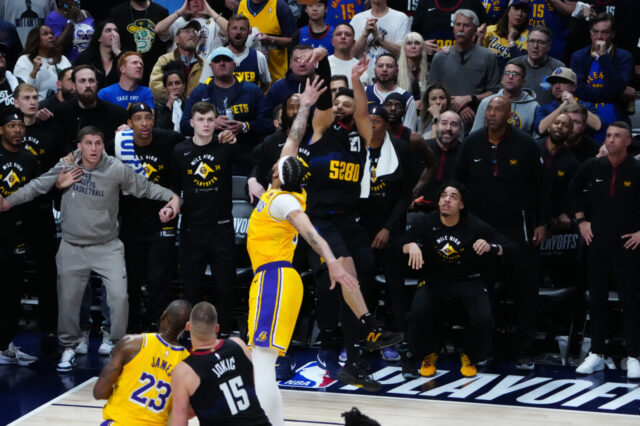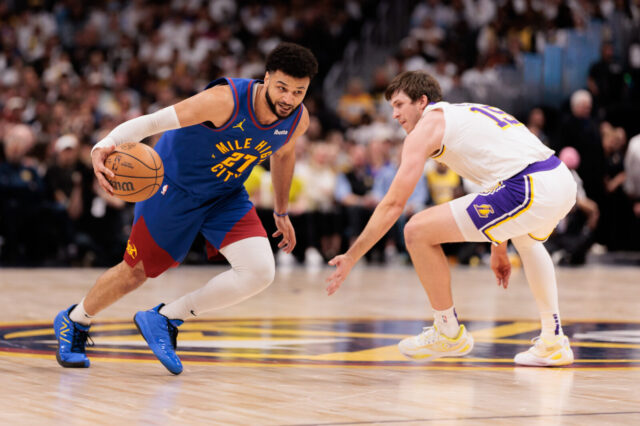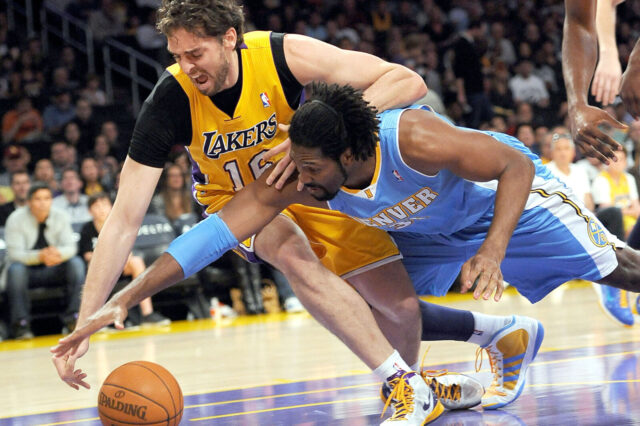Monte Morris 2019-20 season stats:
| Season | Age | Tm | Lg | Pos | G | GS | MP | FG | FGA | FG% | 3P | 3PA | 3P% | 2P | 2PA | 2P% | eFG% | FT | FTA | FT% | ORB | DRB | TRB | AST | STL | BLK | TOV | PF | PTS |
|---|---|---|---|---|---|---|---|---|---|---|---|---|---|---|---|---|---|---|---|---|---|---|---|---|---|---|---|---|---|
| 2019-20 | 24 | DEN | NBA | PG | 65 | 8 | 21.6 | 3.4 | 7.4 | .459 | 0.8 | 2.2 | .375 | 2.6 | 5.2 | .494 | .514 | 0.8 | 1.0 | .823 | 0.3 | 1.4 | 1.7 | 3.5 | 0.8 | 0.2 | 0.7 | 1.0 | 8.4 |
| Career | NBA | 150 | 14 | 22.6 | 3.8 | 7.9 | .480 | 1.0 | 2.5 | .398 | 2.8 | 5.5 | .517 | .542 | 0.8 | 1.0 | .814 | 0.4 | 1.7 | 2.1 | 3.6 | 0.9 | 0.1 | 0.7 | 1.1 | 9.4 |
Season Breakdown:
Monte Morris was one of the few players on the Denver Nuggets roster with few questions heading into the season. After averaging 10.4 points and 3.6 assists on 24.0 minutes per game during 2018-19, his first significant rotation minutes of his career, the Nuggets were simply hoping for more of the same from the Iowa State product. With Jamal Murray signing a max contract during the 2019 offseason, there was little doubt what role Morris would fill: backup point guard minutes while playing next to Murray in specific moments. If Murray were to go down to injury, the Nuggets would have a great option to fill in as a starter.
That’s exactly what happened during the year. Though Morris’ minutes were slightly down, his role was almost identical to the previous year. The efficiency dropped marginally while the historic turnover rate from the previous year increased marginally, but the Nuggets got more or less exactly what they needed out of Morris. He was a steadying hand for bench units, and though those groups frequently negative in the plus-minus department, that often had less to do with Morris and more to do with the personnel around him.
Where Morris continued to shine was during the stretch when Murray went down with a sprained ankle injury. During that 10 game stretch, Morris averaged 30.8 minutes, 10.8 points, and 4.8 assists per game. The Nuggets went 6-4 in that stretch, with Morris proving that he could help the Nuggets keep above water when the going got tough and injuries threatened to upend the season.
The pace with which Morris operated the team during that stretch coincided with some of the best games of the season for the Nuggets, and it started with Morris getting the ball to the right place efficiently. Morris had 10 total turnovers in those 10 games, which meant more opportunities for other players with Morris operating as a facilitator. Nikola Jokic averaged nearly 25 points per game during this stretch, Will Barton averaged nearly 17 points, Jerami Grant averaged 16 points, and Michael Porter Jr. averaged over 14 points himself.
The Nuggets had a lot of scoring talent, but they needed a natural facilitator to help coax out some extra scoring. Morris offered that to help the Nuggets survive.
Season Grade: B
While the vast majority of Morris’ season was good, there were some parts that need discussing. The shooting regressed after an excellent shooting year in 2018-19, and Morris wasn’t the same lethal midrange shooter in 2019-20. That was one of the contributing factors to Denver’s bench offense never fully hitting their groove (or at least a marginal reason). 37.5% from three-point range is good, but 5.1 attempts per 100 possessions just won’t cut it for a point guard in today’s NBA. Among all 120 guards to play 1,000 minutes this season, 5.1 threes attempted per 100 possessions ranks 95th. With Denver having a great interior presence in Jokic, they need players willing and able to let shots fly from the perimeter.
What really impressed me about Morris this year though was how well he handled the mixing and matching of the bench rotation. With Porter Jr. and Torrey Craig splitting small forward minutes, Malik Beasley in and out of the mix, and a Mason Plumlee injury that sidelined Denver’s backup center for 12 games, Morris was left to manage the pieces. He could have done a better job, but he also could have tried to force his own scoring with others in and out of the lineup. He did the prudent thing and kept everyone involved.
What’s next for Monte Morris?
In 2020-21, Morris will be on the last year of a three-year deal he signed prior to the 2018-19 season, which will make him part of a significant 2021 free agent class. He will be available to negotiate an extension (I think) prior to the start of the 2020-21 regular season. There’s no reason to believe the Nuggets wouldn’t try to keep him at that point, and if they can get him for solid backup guard money (between $8-11 million per season) they should attempt to do so.
I think the Nuggets found something with their bench offense when Plumlee was sidelined from mid January to the All-Star break. Morris did a great job of finding either Jerami Grant or Paul Millsap (playing the bench stretch center role) for pick and pops at the top of the key.
With the extra space in the paint, Morris navigated the floor freely, finding spot up shooters and cutters while orchestrating everything off a live dribble. As long as Denver spaced the floor with enough perimeter shooters, teams were unable to stop the Nuggets when Grant or Millsap served as the small ball center with Porter at power forward. It was a potent lineup for Denver offensively; in the 148 minutes Denver played with Morris on the floor and both Jokic and Plumlee off the floor, Denver posted a 118.0 Offensive Rating and 109.8 Defensive Rating. Those are very respectable numbers and could point to how Denver plans to operate in the future with Morris in the fold.
The Nuggets have Jokic and Murray locked in long term. It is widely assumed that both Porter Jr. and Grant will also soon be locked in long term. With Morris in the last year of his deal, expect the Nuggets to make it clear just how much they value solid backup point guard play going forward. The roster is about the get very expensive. Let’s see if the Nuggets are willing to spend to keep solid players like Morris around long term.


